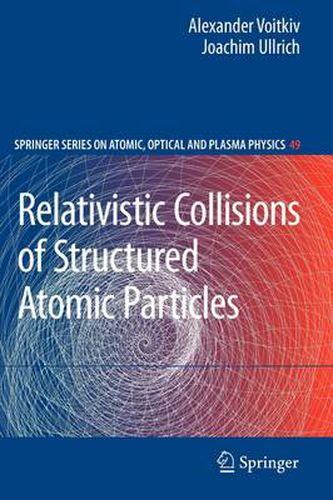Readings Newsletter
Become a Readings Member to make your shopping experience even easier.
Sign in or sign up for free!
You’re not far away from qualifying for FREE standard shipping within Australia
You’ve qualified for FREE standard shipping within Australia
The cart is loading…






This title is printed to order. This book may have been self-published. If so, we cannot guarantee the quality of the content. In the main most books will have gone through the editing process however some may not. We therefore suggest that you be aware of this before ordering this book. If in doubt check either the author or publisher’s details as we are unable to accept any returns unless they are faulty. Please contact us if you have any questions.
During the last two decades the explorations of di?erent processes accom- nyingion-atom collisions athigh-impactenergieshavebeenasubjectofmuch interest. This interest was generated not only by the advent of accelerators of relativistic heavy ions which enabled one to investigate these collisions in an experiment and possible applications of obtained results in other ?elds of physics, but also by the variety of physical mechanisms underlying the atomic collisional phenomena at high impact energies. Often highly charged projectiles produced at accelerators of heavy ions are not fully stripped ions but carry one or more very tightly bound el- trons. In collisions with atomic targets, these electrons can be excited or lost and this may occur simultaneously with electronic transitions in the target. The present book concentrates on, and may serve as an introduction to, th- retical methods which are used to describe the projectile-electron transitions occurringinhigh-energycollisionsbetweenionsandneutralatoms.Special- tention is given to relativistic impact energies and highly charged projectiles. Experimental results are used merely as illustrations and tests for theory. This book will be useful to graduate students and professional scientists who are interested in studying atomic collisions occurring at high-impact - ergies. It assumes that the reader possesses the basic knowledge in classical electrodynamics and nonrelativistic and relativistic quantum mechanics.
$9.00 standard shipping within Australia
FREE standard shipping within Australia for orders over $100.00
Express & International shipping calculated at checkout
This title is printed to order. This book may have been self-published. If so, we cannot guarantee the quality of the content. In the main most books will have gone through the editing process however some may not. We therefore suggest that you be aware of this before ordering this book. If in doubt check either the author or publisher’s details as we are unable to accept any returns unless they are faulty. Please contact us if you have any questions.
During the last two decades the explorations of di?erent processes accom- nyingion-atom collisions athigh-impactenergieshavebeenasubjectofmuch interest. This interest was generated not only by the advent of accelerators of relativistic heavy ions which enabled one to investigate these collisions in an experiment and possible applications of obtained results in other ?elds of physics, but also by the variety of physical mechanisms underlying the atomic collisional phenomena at high impact energies. Often highly charged projectiles produced at accelerators of heavy ions are not fully stripped ions but carry one or more very tightly bound el- trons. In collisions with atomic targets, these electrons can be excited or lost and this may occur simultaneously with electronic transitions in the target. The present book concentrates on, and may serve as an introduction to, th- retical methods which are used to describe the projectile-electron transitions occurringinhigh-energycollisionsbetweenionsandneutralatoms.Special- tention is given to relativistic impact energies and highly charged projectiles. Experimental results are used merely as illustrations and tests for theory. This book will be useful to graduate students and professional scientists who are interested in studying atomic collisions occurring at high-impact - ergies. It assumes that the reader possesses the basic knowledge in classical electrodynamics and nonrelativistic and relativistic quantum mechanics.